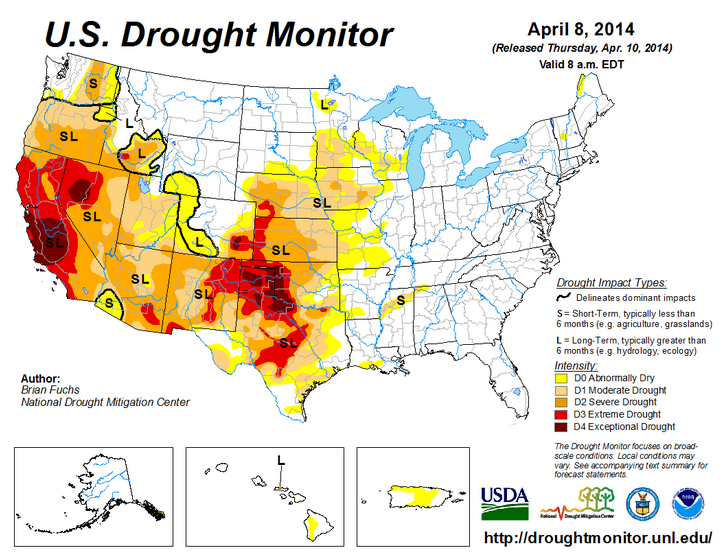When we think of droughts, many Americans think of local water conservation measures such as prohibiting lawn watering and taking fewer showers. Similarly, heat waves bring power shortages and the occasional news story of people succumbing to heat stroke. We don’t often think of droughts and heat waves as disasters in the same way we perceive earthquakes, floods, and storms.
Thus it’s a bit surprising to discover that droughts are among the most costly and harmful disaster events in the US. In fact, because of how long a drought can last, and how widespread it can be, the impact can be huge. When taking into account the effect of the heat waves and droughts in terms of heat stroke and power outages, the wildfire conditions that are encouraged by them, the damage that can be done to agriculture and livestock, and the basic lack of water, the socioeconomic impact can be quite devastating and prolonged.
The National Climatic Data Center (NCDC), part of The National Oceanic and Atmospheric Administration (NOAA), keeps data on what they term “Billion-Dollar Weather/Climate Disasters” [https://www.ncdc.noaa.gov/billions/overview] – events that have caused damages of or in excess of $1 billion. Tornadoes and hurricanes rank at the top in terms of occurrences, with droughts (including heat waves) ranking 4th. A breakdown of these disasters by type shows that the number of tornadoes and hurricanes are almost half the total.
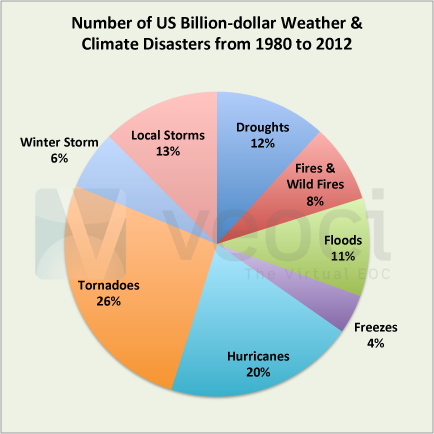
But if you look at the total damage done by these events, a different picture emerges. Droughts rank 2nd with regard to total cost of damages, after hurricanes. There have been 17 droughts and heat waves that have cost more than $1 billion each.
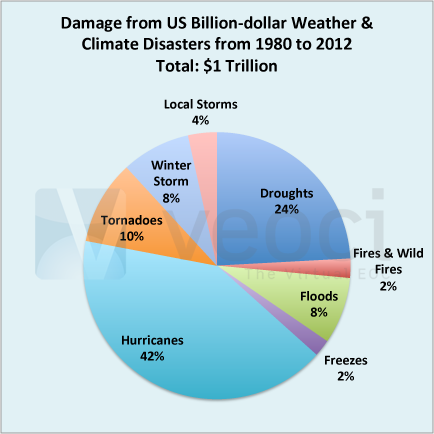
The costliest drought on record took place in 1988. It had a major impact on the Corn Belt, wiping out crops to the tune of $15 billion in losses and ultimately totaled $78.8 billion in damages.
The most widespread drought on record happened not too long ago in 2012, directly affecting more than half of the United States with the highest impact in central agricultural states, and 123 deaths directly attributable to the associated heat wave (the total number, including indirectly caused deaths, isn’t known at this time).
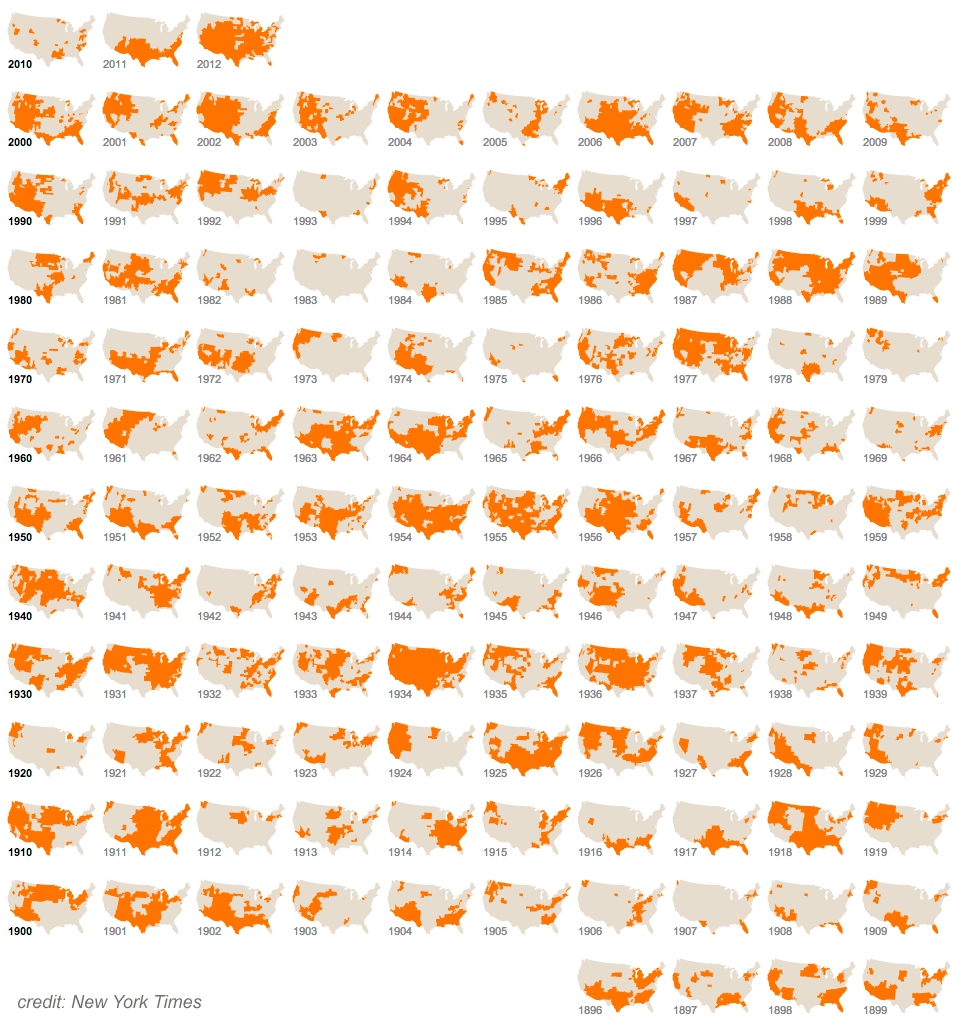
The most eye-opening statistic that emerges when looking at figures for droughts and heat waves is the number of fatalities that these weather catastrophes are responsible for – they lead the list of disasters in cost to human life. According to NCDC’s data, the 1980 and 1988 droughts alone account for approximately 17,500 deaths. Since 1980, for droughts and heat waves that have caused at least $1 billion in damages, nearly 19,000 fatalities have been recorded. That represents 76% of all fatalities caused by Billion-Dollar Weather/Climate Disasters.
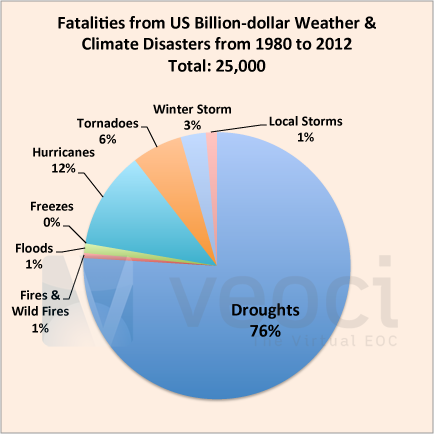
When taking all of this into account, it’s clear that heat waves and droughts are not simply matters of lawns not getting watered or trying to get out of the sun. They are potentially long-term, widespread events with fatal consequences that should be given the same consideration as any other more ferocious-seeming natural disaster.
Related Posts:
Hurricane Katrina’s place among Billion-dollar disasters.
Sixty-One Years of Disasters & Disaster Declarations – Some Basics.
